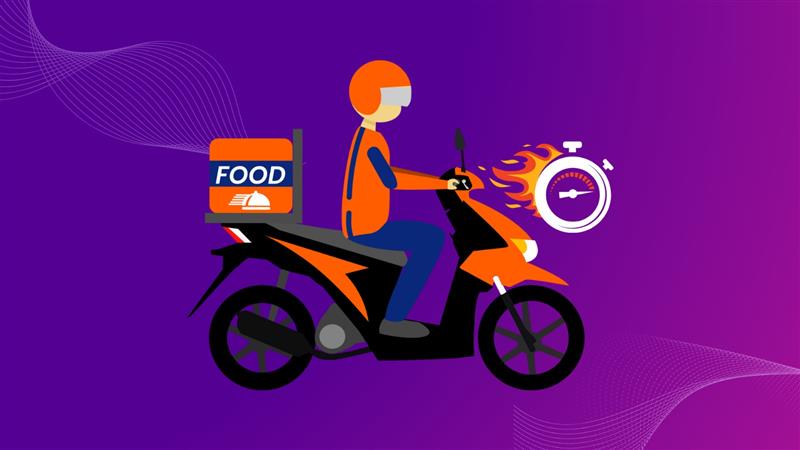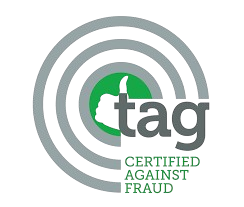Affiliate marketing, as a concept, is revolutionary. It enables businesses to make money by using the influence of popular online publishers. When the right affiliates are involved, affiliate marketing not only drives more sales, but also boosts long-term brand performance metrics like brand recall value and trustworthiness of the brand.
At the same time, by design, affiliate marketing ensures the publishers bring their A-game in getting brands maximum visibility and ensuring their audiences view them in a positive light. After all, more sales also translate to better affiliate payouts for the publishers.
Thanks to this symbiotic nature of affiliate marketing, it is nearly the perfect marketing activity. Nearly.
Instances of affiliate marketing fraud can quickly impact the fantastic results of even the most carefully executed campaigns. Fraud associated with affiliate marketing can drain ad budgets and bring low-intent users to interact with brand’s ad campaigns.
Thankfully, advertisers are not powerless in the face of affiliate marketing fraud. In fact, by employing affiliate monitoring and brand safety best practices, advertisers can completely eliminate the threat of affiliate marketing fraud.
However, before we begin discussing how affiliate fraud prevention works, let’s quickly size up the threat that is affiliate marketing fraud.
Table of Contents
ToggleThe Rising Threat of Affiliate Fraud in 2025
In the next two years, the affiliate marketing market is expected to grow to a whopping $27.78 billion. While this might seem like great news, it also means that fraudsters have that much more incentive to come up with sophisticated ways to commit fraud and dupe advertisers. According to mFilterIt analysis, 43% of the fraudulent traffic is coming from affiliate networks in India.
Where there is money, the instances of fraud also rise. Similarly, in the space of affiliate marketing, Affiliate fraud has existed almost since the inception of this marketing channel. . As digital technologies became more accessible, affiliate fraud practices evolved in tandem with the evolution of affiliate marketing itself and alarmingly, the trend continues.
Today, fraudsters have access to sophisticated artificial intelligence models and automation technologies, enabling them to commit fraud in complex and hard to detect ways. At the same time, such technologies also enable bad actors to commit fraud on an expansive scale, targeting both web and app ecosystems. For brands, these activities translate to a damaged brand reputation, inflated customer acquisition costs, and poor user retention.
How are such fraudulent schemes implemented? Which are the most common ones? Knowledge is the first step to prevention. Let’s peek behind the curtains of affiliate marketing fraud:
Common Affiliate Fraud Techniques & Their Impact
Fraudsters have found various methods to corrupt the affiliate schemes to use to their advantage. While there are some common methods, with evolving technology fraudsters have found new and advanced ways to commit fraud. Some of them are here:
– Incent Fraud
Running incent campaigns is perhaps one of the oldest forms of affiliate fraud and yet, it is exceptionally difficult to detect before the fraud has made a significant dent in your marketing budget. Simply put, affiliates incentivize their audience with a reward in exchange for completing a specific action, such as downloading an app and completing an action once the download is complete. Incentives can include small rewards such as loyalty points or even a small share of the affiliate payout.
Since the users complete these actions because of the lure of the reward offered by the affiliate they seldom have any genuine interest in interacting with the advertiser’s app or website. As a result, the advertiser ends up paying for the interactions with these uninterested users while gaining nothing of significance in exchange. This further leads to a high uninstall rate and the advertiser has to pay more to acquire more customers.
– Brand Bidding
This is especially problematic for brands as it drains their marketing budget twice as fast. By bidding for the same keywords as the brand, fraudsters increase the competition around those keywords, leading to an inflated cost-per-click (CPC) paid by the brand. Additionally, the brand still ends up paying much more than the CPC for the traffic it loses in the ads as it is redirected to their website as affiliate traffic by the fraudsters.
– Trademark Misuse
Another common yet clever form of affiliate fraud is impersonation. Fraudulent publishers create fake websites that share striking similarities with an advertiser’s website. Using these, fraudsters may impersonate the brand to attract high-intent traffic and then use affiliate links from the real brand on their fake websites to get affiliate rewards.
– Cookie Stuffing & Attribution Fraud
With cookie stuffing, fraudulent affiliates drop a cookie in the user’s browser when they visit a brand’s website. This way, even if the user visits the brand’s website directly, the attribution of the sale is allocated to the fraudster, enabling them to get affiliate commission for a sale they did not enable.
This not only results in the brand paying affiliate commission on an organic sale, it also manipulates the sales metrics, making data unreliable.
– Fake Lead Generation & Form Spamming
One of the most common tools employed for committing click fraud is a bot. Fraudsters use a network of bots with varying sophistication to complete tasks that get them affiliate revenue. Bots are programmed to act like real human users and generate clicks and fill out lead generation forms with fake information.
If an advertiser pays affiliate commissions for lead generation actions, they may easily fall victim to a fake lead generation and form spamming fraud. This can not only lead to wasted marketing spending and poor conversion rate, but it can also have a long-lasting impact on the advertiser’s overall marketing efforts because it dilutes and skews their marketing performance and CRM data.
– Misuse of Advertiser’s Brand Assets
In some cases, fraudsters may stoop down to directly scam the users. While this usually does not lead to wastage of marketing budgets, it can hurt advertisers and brands in other equally significant ways.
Fraudsters may create fake websites and market them using deceptive ads to attract unwitting users that trust the brand that they are impersonating. These fake websites may supply users with incorrect information about the brands, or worse, scam them outright with the promise of a product or service in exchange for a quick online payment.
At the end of the transaction, the user will have paid for a product or service that they never got and because of the impersonation, they may blame the authentic brand for this sour experience.
How to Identify Affiliate Fraud & Protect Your Ad Budget
– Implementing Advanced Traffic Validation
As you may have noticed in the previous section, a lot of the affiliate fraud techniques depend on the use of bots and botnets to generate fake clicks, drive fake downloads, and complete other actions for which an advertiser may be paying an affiliate reward.
Such fraudulent activities are almost impossible to detect manually. However, these can be easily eliminated with the use of an advanced ad traffic solution that can analyze the abnormal patterns of a user and flag them proactively for advertisers to take action against it. With real-time monitoring, advertisers can eliminate these junk and suspicious traffic sources, optimize their ad campaigns and flag these suspicious activities to the affiliates, thereby saving their budgets on getting wasted on junk traffic.
– Monitoring Brand Bidding & Trademark Violations
To effectively combat brand bidding, brands must employ advanced ad monitoring tools that can keep a check on these brand bidding violations in real-time. With active reporting and real-time data, the advertisers can take action against brand bidding cases and optimize their campaign budgets.
– Strengthening Affiliate Agreements & Policies
Another way for brands to safeguard their online image against instances of brand bidding is to create a set of strict guidelines that prevent actions that undermine the brand’s online image. Moreover, brands must also conduct regular audits and outline definitive compliance measures to ensure affiliates are following the guidelines laid out.
– Lead Validation
Implement a Lead Scoring Solution Advertisers need to proactively assess their lead quality to maintain their CRM hygiene and also ensure they are not spending their money and resources on junk leads. mFilterIt’s lead scoring solution helps advertisers to analyze their lead quality on the basis of analyzing various parameters bundled with AI-ML capabilities.
Conclusion & Call to Action
As great as affiliate marketing is, like everything great, it has its problems, plaguing it in the form of fraudulent activities. Thankfully, for every type of fraud, there is a way to protect and overcome it. AI-powered fraud detection solutions combined with well-planned and implemented brand and industry compliances can enable advertisers to reap the benefits of affiliate marketing, without facing any risk.
With the proliferation of fraud in all forms of advertising, coupled with the increasing sophistication of the fraudulent techniques used by fraudsters, employing a fraud detection tool is no longer optional. If you are currently engaged in affiliate advertising, or having it planned as a marketing activity, make sure your strategy is immune to fraud with a reliable fraud detection tool.
Want to get a demo of how we do it? Contact our team today









